An engaging composition of whimsically abstracted forms and playfully flat perspectives, David Hockney’s A Painted Landscape (Or Red and Blue Landscape) is emblematic of the artist’s boundless curiosity and artistic scholarship. Throughout his remarkable career, Hockney has successfully merged a deep appreciation for and awareness of art historical precedent with an unwavering desire to push the boundaries of painting through his own, utterly unique vision. Used to remarkable effect in A Painted Landscape (Or Red and Blue Landscape), this tension between tradition and innovation has, over the past sixty years, distinguished Hockney as amongst the foremost artists of the contemporary age. Hockney fuses the influence of geometric Cubism, Surrealist abstraction, still life genre painting and even his own oeuvre to create an utterly intriguing composition; indeed, Hockney’s ever-evolving artistic practice is a means of advancing art history from within, and the present work seems to do just this.
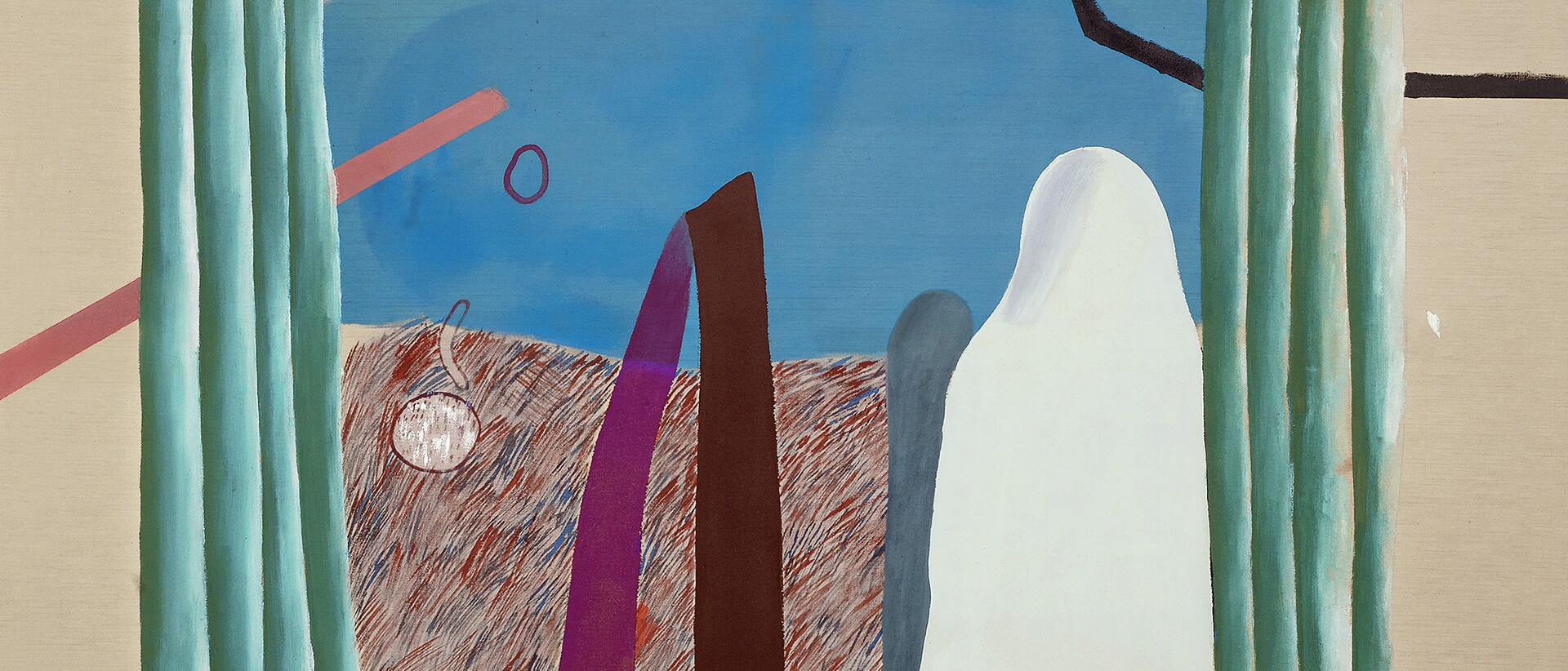
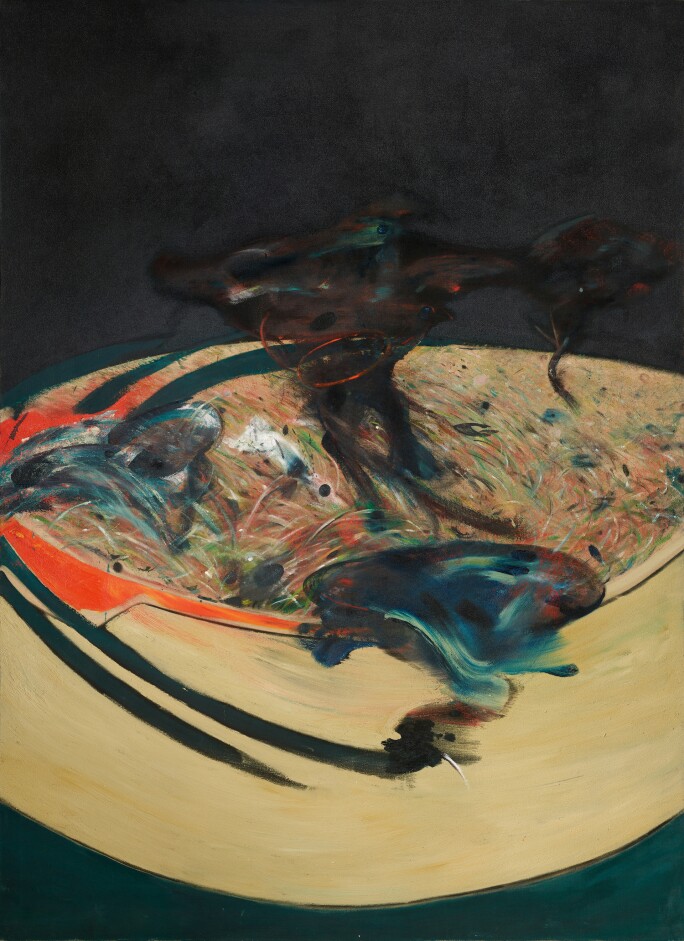
Private Collection
Image/Artwork: © The Estate of Francis Bacon. All rights reserved. DACS/Artimage 2022
Subverting traditional perspective and notions of depth while trying to depict his own idiosyncratic reality, A Painted Landscape (Or Red and Blue Landscape) illuminates a white, ghostly silhouette of a cloaked figure looking out onto a vista of sand, sea and sky framed by green curtains. Hockney executed the present work upon his return to London in late 1965 for his second solo show at John Kasmin’s gallery. During this period, Hockney painstakingly and methodically composed an ideal environment for his artistic endeavors; he would deconstruct the figuration of a given composition and reassemble it in a way that plays with the viewer’s sensory perceptions; we instinctively grasp for what is familiar and recognizable, yet the abstraction and vibrant blocks of colour alter our pictorial expectations. At once, Hockney was embracing and challenging the rhetoric of modernist painting which had gained widespread acceptance in American post-war art with its increasing emphasis on the flatness of the picture plane. Straddling both abstract and representational worlds, Hockney was intent on revealing his paintings as a collection of marks on a flat surface, yet, he was not willing to abandon the representational possibilities of these marks.
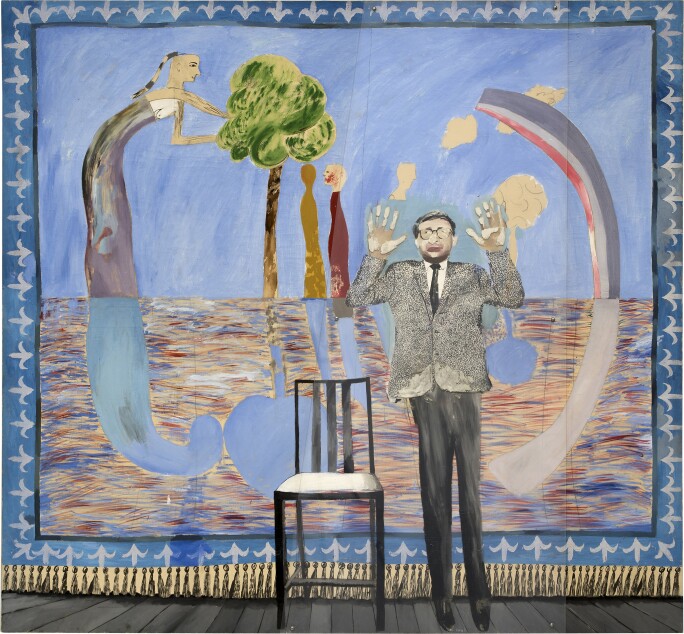
Private Collection
Image/Artwork: © David Hockney
Bearing witness to the artist’s long-standing preoccupation with theatre and stage-set design, Hockney defined A Painted Landscape (Or Red and Blue Landscape) as a “theatrical picture”, and it remains unclear whether the figure looks out onto the landscape or whether it faces a painted theatrical backdrop of such a scene instead (David Hockney, David Hockney by David Hockney, London, 1976, p. 102). Both perspective and recession are conspicuously absent in this work. The intimate seascape is depicted flat against the picture plane in abstracted, frieze-like layers and areas of colour are uncompromisingly frontal only revealing the painting's most basic material elements, forming a direct precursor to Hockney’s work in stage-set design. Drawing the viewer’s attention to the surface of his paintings, which he often posited as the boundary between real and fictive space, is a recurring compositional trope in Hockney’s oeuvre, effectively equating pictorial space to a shallow stage set. It comes as no surprise then that only one year after completing A Painted Landscape (Or Red and Blue Landscape) the artist would carry the theatrical metaphor inherent within his paintings to the actual design of real sets and costumes for a revival of Ubu Roi at London’s Royal Court Theatre. In the 1970s Hockney also became actively involved in theatrical productions such as The Rake’s Progress, The Magic Flute and Oedipus Rex. On the other hand, the overt lack of perspective was also a technique Hockney used to imbue his work with a greater degree of phenomenological truth. In flattening his representation, he assumed that the viewer was not located in front of the picture, but within it – that their point of view was not behind his own, but in front. The figure becomes a universal surrogate for the viewer in front of a painting who enjoys the illusion of depth but is aware of its physical properties as paint on canvas.
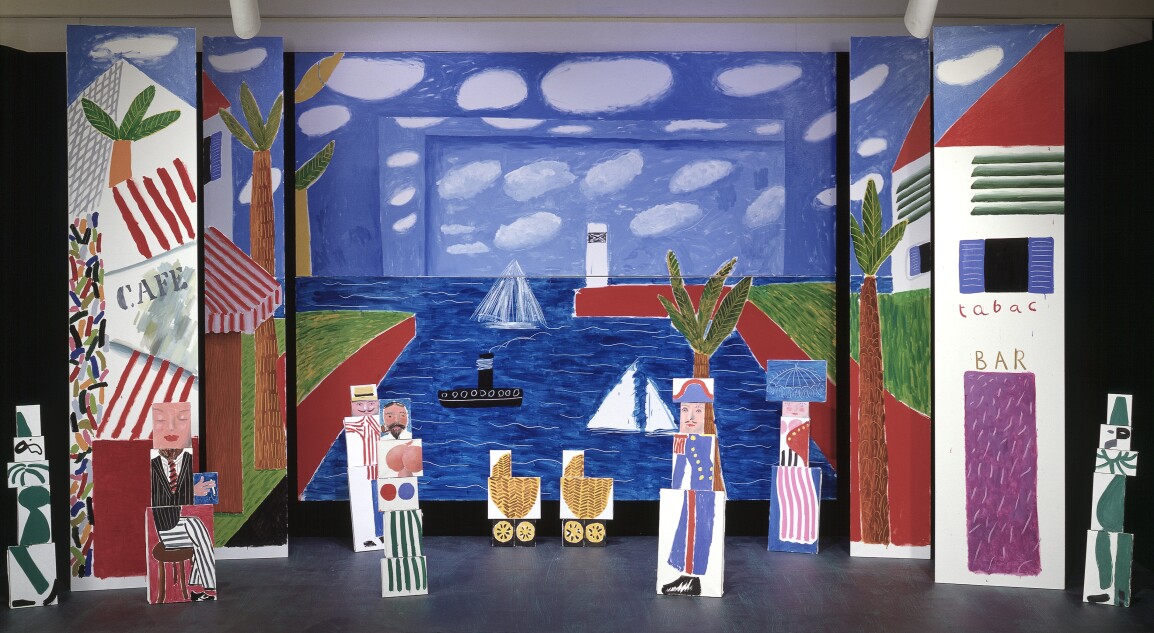
Image/Artwork: © David Hockney
This painting, like Hockney’s most important works, is steeped in art-historical reference. In its graphic shapes and intriguing spatial play, A Painted Landscape (Or Red and Blue Landscape) exemplifies not only the masterful sensitivity towards art history, but also the ways in which Hockney pushes the existent boundaries of prior traditions to produce something entirely unique. Here, the shapes that dominate the composition, with their strange shadows and simplified outlines, recall the metaphysical works of Giorgio de Chirico or the Surrealist landscapes of Yves Tanguy and René Magritte. The conception of space, flattened use of light and the primitive figuration all have associations with the works of Fra Angelico, Giotto and Piero della Francesca. But they also have a close relation to Hockney's great affinity for Egyptian art from his trip there in 1963. Hockney’s vivid, saturated colours also evoke his Fauvist hero Henri Matisse, while his foreshortening of ground and compression of perspective clearly reveal his abiding interest in Cubism. Simultaneously, the sheer experimental enthusiasm the present work testifies to the greater freedom of invention in space and form with which Hockney approached his canvases of the early 1960s.
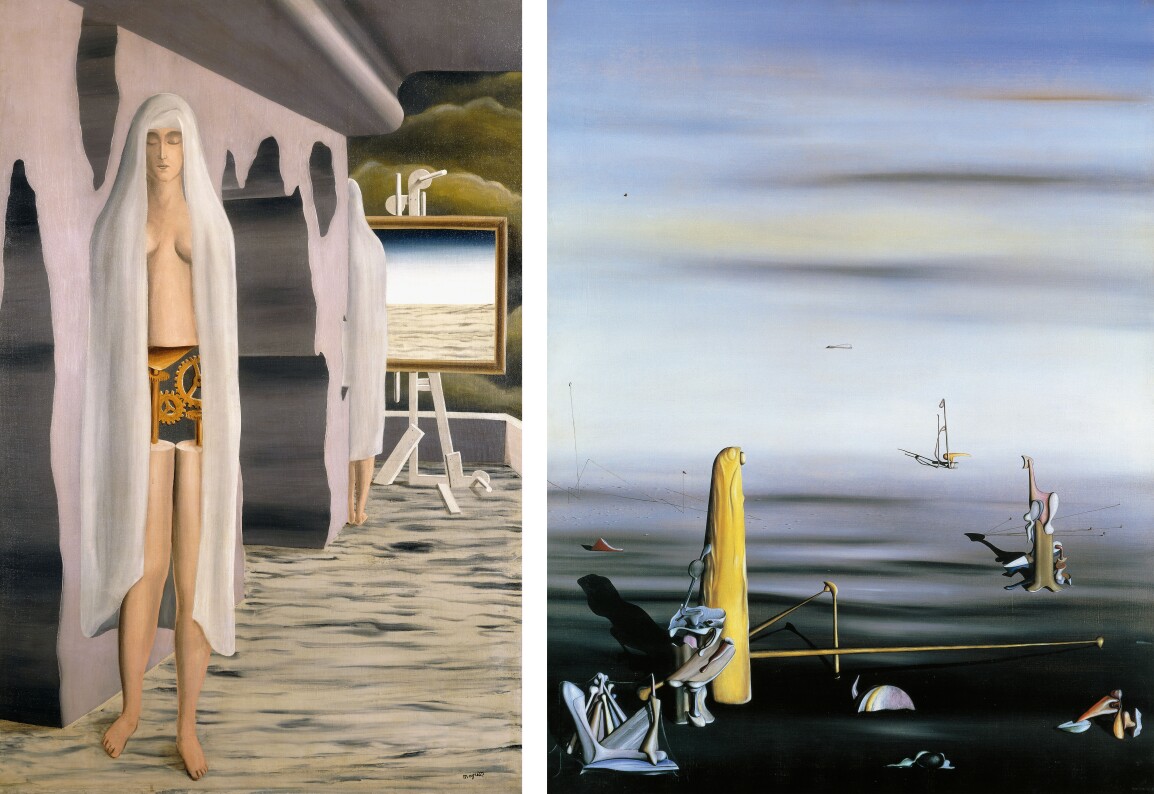
RIGHT: Yves Tanguy, The Sun in its Jewel Case, 1937, Peggy Guggenheim Foundation, Venice, Image: © NPL - DeA Picture Library / Bridgeman
In the present work we find the full exertion of Hockney’s quintessential playfulness and liberated gusto, revealing how the artist clearly delights in the spirited rendering of his familiar surroundings while blurring the line between visceral reality and staged fantasy. Throughout his career, Hockney has possessed a voracious appetite for art history, digesting and translating significant movements into his own unique idiom; this constant mining of tropes and techniques within the canon coalesce across the grand stage of A Painted Landscape (Or Red and Blue Landscape), all compounded into one magnificent tour de force of painterly vigor and exultation. A classic example of the experimentation and innovation that has characterised a masterful career, the present work once again reveals Hockney as one of today’s most accomplished and engaging painters.